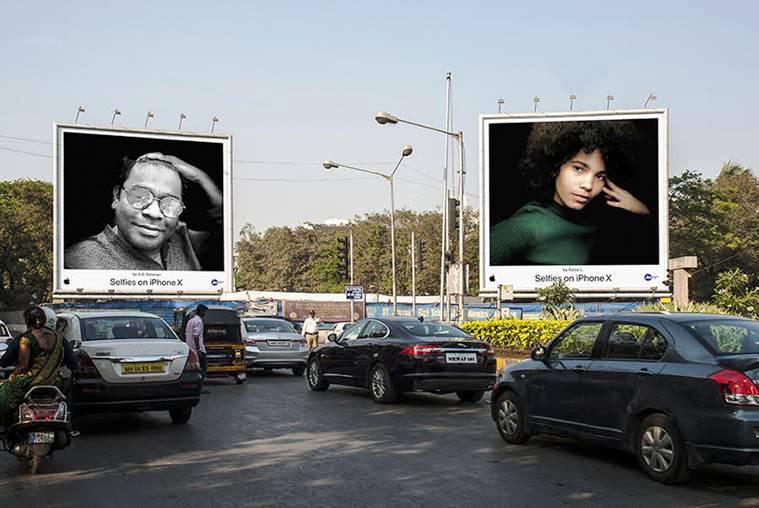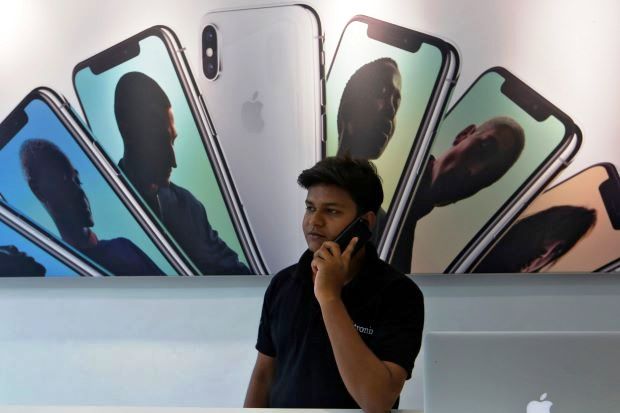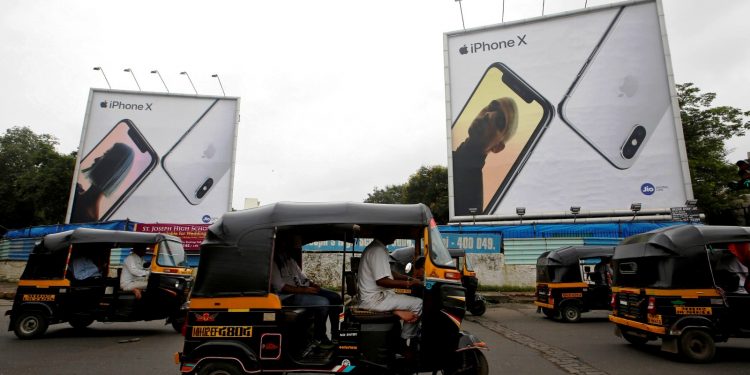BENGALURU: Software engineer Samee Alam was ready to take the big leap and buy an iPhone in this week’s Diwali festival sales, but at the last minute he opted for cheaper Chinese competitor OnePlus instead.
Alam, 27, spends hours on his phone watching shows, surfing and shopping, making him the perfect target for Apple Inc as it strives to raise sales among India’s 1.3 billion consumers.
But in a country where the average per capita income is around $2,000 a year, even the cheapest of this year’s new iPhones, the XR at 76,900 rupees ($1,058), costs twice as much as many of the alternatives.
Hong Kong-based Counterpoint Research says that iPhone sales are falling as a result. From three million phones in 2017, sales may sink to two million this year, according to their estimate, the first decline in four years.
More than half of those sales will come from cheaper older models, and the lack of progress in India was among problems cited by Chief Executive Officer Tim Cook when he gave a disappointing holiday outlook last week.
Even in the premium segment, smartphones that cost more than $400, Apple lagged Samsung and China’s OnePlus in the third quarter.

“I have never used an iPhone and I was keen on getting my hands on one but it didn’t make sense,” says Alam, who works for one of the raft of firms to have invested in the southern city of Bengaluru, often called India’s Silicon Valley.
“I look for storage, camera and processor in phones and cheaper alternatives like OnePlus are more value for the money. The new iPhones cost almost 100,000 rupees – I can get three good phones for that price or even a decent gaming laptop.”
Solid Mac sales and the high unit price of iPhones meant Apple’s total revenue of $2 billion in India last year was still double that of OnePlus, which only sells mobile phones. But Counterpoint’s data says that gap will also shrink.
OnePlus’ India head Vikas Agarwal told Reuters this week that 10-15 percent of new customers in recent months have been defectors from Apple, suggesting even some loyalists are opting out of upgrading their handsets.
HIGH IMPORT DUTIES
Apple’s problems go beyond price.
The company, facing down a handful of regulatory headaches, lost some of its top executives in India at the start of this year.
An Apple spokesman said the departures had nothing to do with the company’s performance, but people familiar with the matter told Reuters that the departures were likely linked to the company changing its distribution system. Apple has cut the number of distributors in the country to two from five.
The sources, who declined to be identified because they have business relationships with Apple, also said company veteran Michel Columb is still working on solidifying business relations since taking control of the Indian operation December.
Apple declined to comment further.

Prime Minister Narendra Modi’s government has sought to drive electronics producers into manufacturing locally by steadily moving tariffs up the supply chain from simple phone cases to sophisticated chipsets and boards.
Along with local firms like Lava, global smartphone giants including Samsung Electronics Co Ltd, Oppo and Xiaomi Corp have responded aggressively, investing millions of dollars in plants around Bengaluru and Delhi tech hub Noida.
Apple is the only major player which does not manufacture phones in the country and it only assembles two low-cost older models through Wistron Corp in Bengaluru.
Industry experts say as a result the company still imports about 70-80 percent of its phones. That results in high import duties, which in turn make the phones expensive.
In the United States, the basic iPhone XR model costs $749 or roughly 54,400 rupees, only two thirds of its retail price in India. Beyond that, while U.S. phones are subsidized under deals with wireless carriers, Apple’s phones in India are not.
“Apple doesn’t have enough confidence … in the Indian manufacturing system right now, to set up plants and move some of the manufacturing out of China,” said analyst Navkendar Singh of tech consulting firm IDC.
“In the process they are losing around 15-20 percent of their tax incentive … which they could have passed on to the consumer.”
EMPTY STORES
Diwali, the Festival of Lights, is peak selling time for electronics in India, but the Apple-licensed store in one of Bengaluru’s big shopping malls was deserted this past Saturday.
“Features of the emerging phones are very similar to an iPhone,” says salesman Aejaz Ahmed, adding volumes have fallen in the past few months. “It is very difficult to make out the difference from a distance because they even look so alike.”
Sales staff at several stores in Bengaluru and nearby Chennai pointed to the launch this year of the latest OnePlus phone as a major problem for the U.S. phonemaker. At 37,999 rupees, the Chinese company’s 6T is half the price of the XR.
The result, says Neil Shah, from Counterpoint, is that Apple’s user base in India is set to decline about 10 percent to nine million users this year. That compares to an estimated 436 million Android users.
“If your user base is declining, you are losing grip on the market,” he says. “The new customer base is not coming.”
Reuters







































